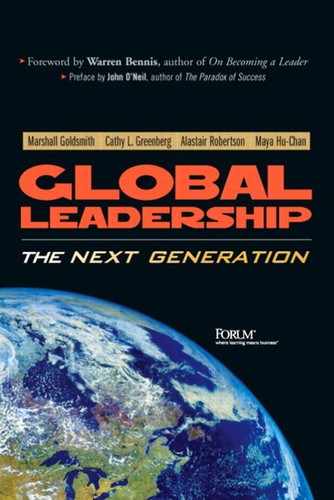Appendix D
Statistical Methods
The pilot questionnaires were administered to 100 participants of the focus/dialogue groups. Fifty usable questionnaires were reviewed for clarity, consistency, and face validity. The questionnaire was deemed suitable for further use.
For the research, two questionnaires were used for data collection. The first, an 82-item scale, asked participants to rate the criticality of each item for global leadership in the past, present, and future with a ten-point scale. The second, a 14-item scale, asked participants to force-rank each of the 14 dimensions for criticality for global leadership in the past, present, and future. The 14-item questionnaire was used as a general validity check, but was not used in data analysis due to the general statistical problems with ranked scales.
The questionnaire was distributed to more than 200 participants of Global Leader of the Future Network Forums and conference focus groups. Profile data were analyzed using multiple methods; cases were divided into five geographical regions (Asia, Australia, Europe, North America, and South America); three time periods (past, present, and future); gender; and five age groups for comparison. Methods included basic statistical analyses, reliability analyses, two-tailed T-tests, factor analyses with Varimax rotation and Kaiser normalization, and multiple analyses of variance. The Statistical Package for the Social Sciences (SPSS) was used to analyze the data.
After missing data analyses were conducted, 73 questionnaires were used for analysis. The respondent profile includes participants from Asia, Australia, Europe, North America, and South America. The profile also represents participants from different organizational levels and stages of leadership (executive, middle, potential), and from multiple industries and organization configurations.
Basic statistical analyses produced expected results with no major abnormalities of distributions. Reliability for dimensions ranged from a minimum of .7553 and a maximum of .9736, indicating that items composing a dimension were highly correlated.
Summary
The first two phases of knowledge development—assess and generate—indicated that there are 14 global leadership dimensions that are critical for the future. Quantitative and qualitative data gathered from thought leaders, CEOs, and current and future global leaders indicated consensus for the findings.
